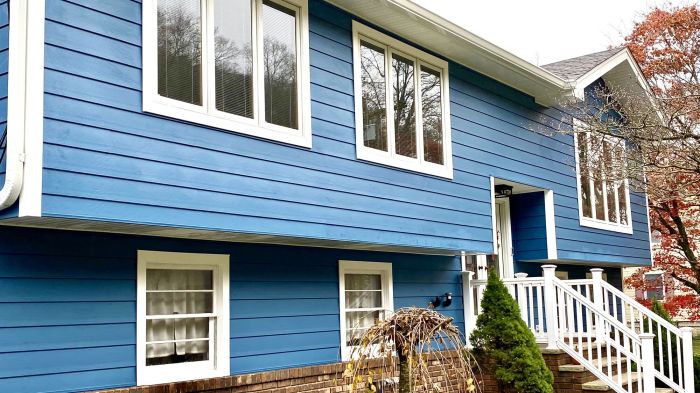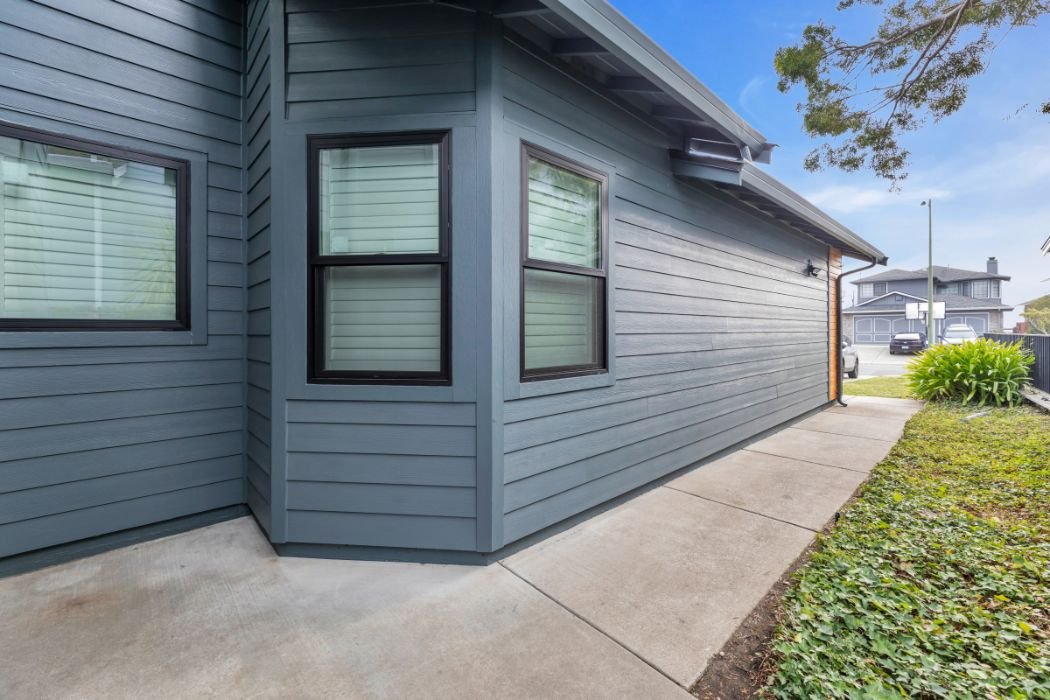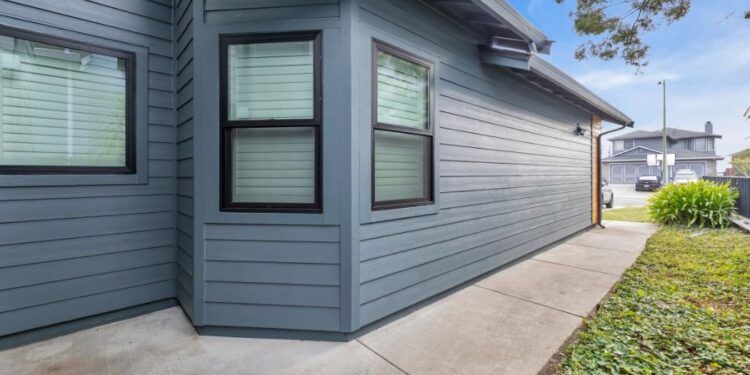Embark on a journey to transform your home with a siding remodel. Discover the latest trends, costs, and design tips to enhance your home's exterior.
Types of Siding Materials
When it comes to siding materials for remodeling projects, there are several options to choose from based on factors like durability, aesthetics, and maintenance requirements.
Vinyl Siding vs. Fiber Cement Siding
Vinyl siding is a popular choice due to its affordability and low maintenance, making it a cost-effective option for many homeowners. However, fiber cement siding is known for its durability and resistance to elements like fire, moisture, and pests. While vinyl siding may fade over time and require occasional cleaning, fiber cement siding can last for decades with minimal maintenance.
Wood Siding vs. Metal Siding
Wood siding offers a classic and natural look that can enhance the curb appeal of a home. It can be painted or stained in various colors to match different architectural styles. On the other hand, metal siding, such as aluminum or steel, provides a modern and sleek appearance with excellent durability and resistance to rot and insects.
Metal siding is also energy-efficient and recyclable, making it an eco-friendly choice for homeowners.For visual reference, examples of homes with different siding materials can be found in various neighborhoods showcasing the unique characteristics and benefits of each type. Whether you prefer the traditional charm of wood siding or the contemporary appeal of metal siding, there is a siding material to suit every homeowner's taste and needs.
Cost Considerations

When it comes to remodeling your home's siding, cost is a significant factor to consider. The choice of siding material can greatly impact the overall cost of the project. In addition to the upfront material costs, you also need to factor in installation costs and long-term maintenance expenses to make an informed decision.
Impact of Siding Materials on Cost
Different siding materials come with varying price tags, which can significantly affect the total cost of your remodel. Vinyl siding, for example, is one of the most affordable options, making it a popular choice for budget-conscious homeowners. On the other hand, materials like fiber cement or natural wood siding tend to be more expensive upfront but can offer durability and aesthetic appeal that may justify the higher cost.
Installation Costs
The installation costs associated with each type of siding material can also vary. Vinyl siding is generally easier and quicker to install, which can help reduce labor costs. On the other hand, materials like fiber cement or natural wood siding may require more intricate installation techniques, leading to higher installation expenses.
It's essential to factor in these labor costs when budgeting for your siding remodel.
Long-Term Maintenance Costs
In addition to upfront material and installation costs, it's important to consider the long-term maintenance expenses associated with different siding options. Vinyl siding, for example, is known for its low maintenance requirements, making it a cost-effective choice over time. However, materials like wood siding may require more frequent maintenance, such as painting or staining, which can add up in terms of both time and money.
Considering the long-term maintenance costs can help you make a smart investment in your home's exterior.
Siding Design and Styles

When it comes to siding design and styles for modern home remodels, there are several trends that homeowners can consider to enhance the overall look of their property. The choice of siding can significantly impact the curb appeal of a house, making it essential to select the right style based on architectural features and personal preferences.
In addition, color choices play a crucial role in determining the aesthetic appeal of a home's exterior.
Popular Siding Design Trends
- Vertical Siding: Vertical siding has gained popularity for its modern and sleek appearance, offering a unique alternative to traditional horizontal siding.
- Board and Batten: This style features alternating wide boards and narrow strips, creating a rustic yet stylish look that adds character to a home.
- Shingle Siding: Mimicking the look of cedar shingles, this siding style provides a classic and timeless appeal to any property.
Enhancing Curb Appeal
- Consider the architectural style of your home when selecting a siding design to ensure it complements the overall look.
- Choose colors that harmonize with the surroundings and highlight the architectural features of the house.
- Mixing textures and materials can create visual interest and depth, adding dimension to the exterior of the home.
Selecting the Right Siding Style
- For traditional or colonial-style homes, opt for classic siding options like clapboard or dutch lap for a timeless look.
- Modern homes can benefit from sleek and simple siding designs such as smooth panels or metal cladding for a contemporary appearance.
- Take into account the scale and proportions of the house to ensure the siding style complements the overall architecture.
Impact of Color Choices
- Lighter colors can make a house appear larger and more inviting, while darker hues can create a sense of drama and sophistication.
- Neutral tones like gray, beige, and white are versatile options that can work well with various architectural styles.
- Bold colors like navy blue, forest green, or red can add a pop of personality and make a statement, but should be used sparingly for a balanced look.
Installation Process

When it comes to installing new siding during a remodel, there are several important steps to follow to ensure a successful outcome. Proper insulation and weatherproofing are crucial elements of the installation process to protect your home from the elements.
Understanding the common challenges faced during siding installation and how to overcome them can help homeowners navigate the process smoothly. Here is a checklist for homeowners to prepare for the siding remodel process.
Steps Involved in Siding Installation
- Remove existing siding carefully to avoid damage to the underlying structure.
- Inspect the sheathing for any damage and repair or replace as needed.
- Install a moisture barrier to protect against water infiltration.
- Apply insulation to improve energy efficiency and regulate indoor temperature.
- Install the new siding according to manufacturer instructions, ensuring proper alignment and secure attachment.
- Finish with trim pieces and sealants to complete the look and enhance weather resistance.
Importance of Proper Insulation and Weatherproofing
- Insulation helps regulate indoor temperature and reduce energy costs.
- Weatherproofing prevents water damage and protects the structural integrity of the home.
- Proper insulation and weatherproofing can extend the lifespan of the siding and improve overall home efficiency.
Common Challenges and How to Overcome Them
- Uneven surfaces: Use shims or adjust installation techniques to ensure a smooth finish.
- Moisture damage: Address any water infiltration issues before proceeding with installation.
- Pest infestations: Treat affected areas and take preventative measures to avoid future problems.
Checklist for Homeowners
- Choose the right siding material for your home's aesthetic and functional needs.
- Obtain necessary permits and approvals before starting the remodel project.
- Hire a reputable contractor with experience in siding installation for quality workmanship.
- Prepare the exterior of your home by clearing debris and creating a safe work environment.
- Communicate openly with your contractor to address any concerns or questions throughout the process.
Closing Summary
As we conclude our exploration of siding remodel, remember that choosing the right material and design can truly elevate your home's curb appeal. Start your renovation journey today!
Popular Questions
What are the most common siding materials used in remodels?
Common siding materials include vinyl, fiber cement, wood, and metal.
How do different siding materials impact overall costs?
Materials like fiber cement are more expensive upfront, but require less maintenance in the long run compared to wood.
What design tips can enhance the curb appeal of a house through siding?
Choosing a color that complements your home's architecture and landscaping can greatly enhance curb appeal.
What is the importance of proper insulation during siding installation?
Proper insulation helps improve energy efficiency and protects your home from elements.














